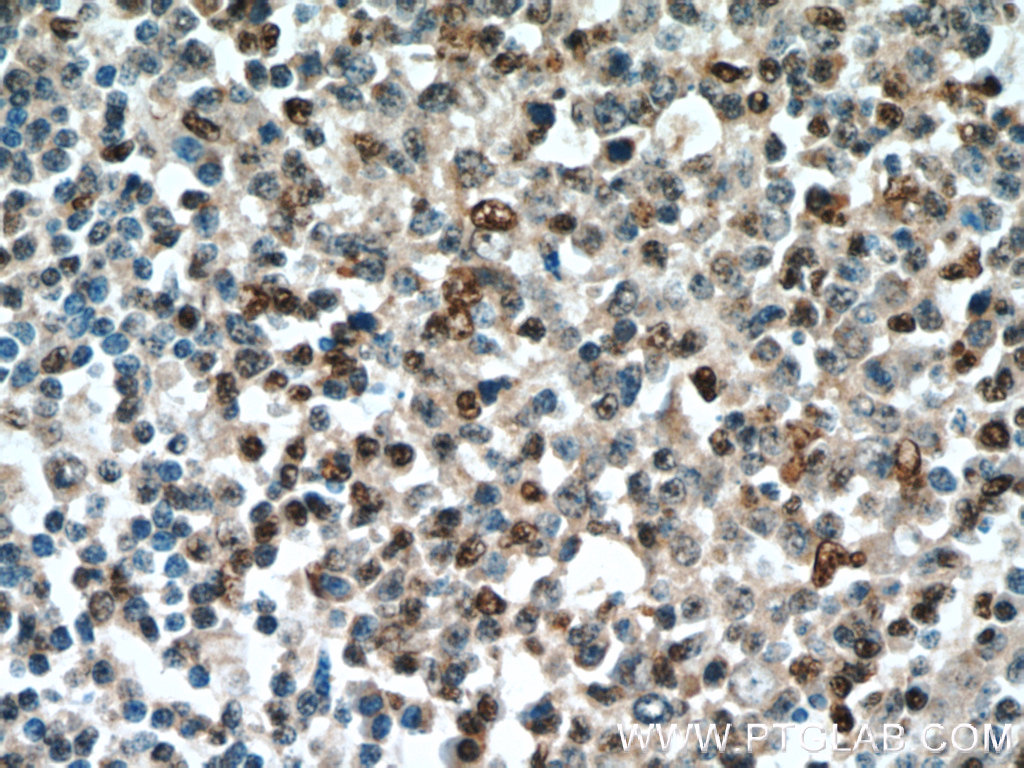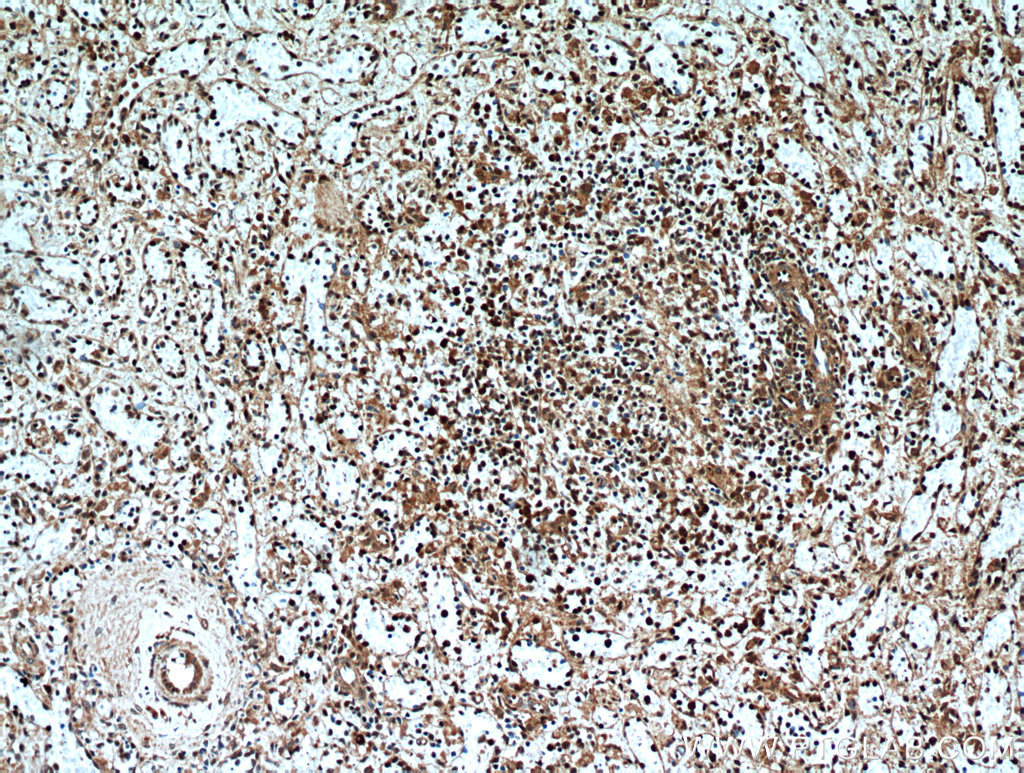SUPT16H Polyclonal antibody
SUPT16H Polyclonal Antibody for WB, IP, IHC, ELISA
Host / Isotype
Rabbit / IgG
Reactivity
human, mouse
Applications
WB, IP, IHC, ELISA
Conjugate
Unconjugated
验证数据展示
经过测试的应用
| Positive WB detected in | mouse brain tissue |
| Positive IP detected in | mouse brain tissue |
| Positive IHC detected in | human tonsillitis tissue, human spleen tissue Note: suggested antigen retrieval with TE buffer pH 9.0; (*) Alternatively, antigen retrieval may be performed with citrate buffer pH 6.0 |
推荐稀释比
| Application | Dilution |
|---|---|
| Western Blot (WB) | WB : 1:500-1:2000 |
| Immunoprecipitation (IP) | IP : 0.5-4.0 ug for 1.0-3.0 mg of total protein lysate |
| Immunohistochemistry (IHC) | IHC : 1:20-1:200 |
| It is recommended that this reagent should be titrated in each testing system to obtain optimal results. | |
| Sample-dependent, Check data in validation data gallery. | |
发表文章中的应用
| WB | See 2 publications below |
| IHC | See 2 publications below |
产品信息
20551-1-AP targets SUPT16H in WB, IP, IHC, ELISA applications and shows reactivity with human, mouse samples.
| Tested Applications | WB, IP, IHC, ELISA Application Description |
| Cited Applications | WB, IHC |
| Tested Reactivity | human, mouse |
| Cited Reactivity | human, mouse |
| Immunogen | Peptide 种属同源性预测 |
| Host / Isotype | Rabbit / IgG |
| Class | Polyclonal |
| Type | Antibody |
| Full Name | suppressor of Ty 16 homolog (S. cerevisiae) |
| Synonyms | CDC68, FACT 140 kDa subunit, FACT complex subunit SPT16, FACT140, FACTP140, hSPT16, SPT16/CDC68, SUPT16H |
| Calculated Molecular Weight | 120 kDa |
| Observed Molecular Weight | 140 kDa |
| GenBank Accession Number | NM_007192 |
| Gene Symbol | SUPT16H |
| Gene ID (NCBI) | 11198 |
| RRID | AB_10700005 |
| Conjugate | Unconjugated |
| Form | Liquid |
| Purification Method | Antigen affinity purification |
| UNIPROT ID | Q9Y5B9 |
| Storage Buffer | PBS with 0.02% sodium azide and 50% glycerol pH 7.3. |
| Storage Conditions | Store at -20°C. Stable for one year after shipment. Aliquoting is unnecessary for -20oC storage. |
背景介绍
实验方案
| Product Specific Protocols | |
|---|---|
| WB protocol for SUPT16H antibody 20551-1-AP | Download protocol |
| IHC protocol for SUPT16H antibody 20551-1-AP | Download protocol |
| IP protocol for SUPT16H antibody 20551-1-AP | Download protocol |
| Standard Protocols | |
|---|---|
| Click here to view our Standard Protocols |
发表文章
| Species | Application | Title |
|---|---|---|
Arterioscler Thromb Vasc Biol Novel Long Noncoding RNA, Macrophage Inflammation-Suppressing Transcript (MIST), Regulates Macrophage Activation During Obesity. | ||
FASEB J Chronic exercise training activates histone turnover in mouse skeletal muscle fibers. | ||
J Mol Biol Proteomic characterization of the nucleolar linker histone H1 interaction network. | ||
Biomed Pharmacother CBL0137 activates ROS/BAX signaling to promote caspase-3/GSDME-dependent pyroptosis in ovarian cancer cells |











